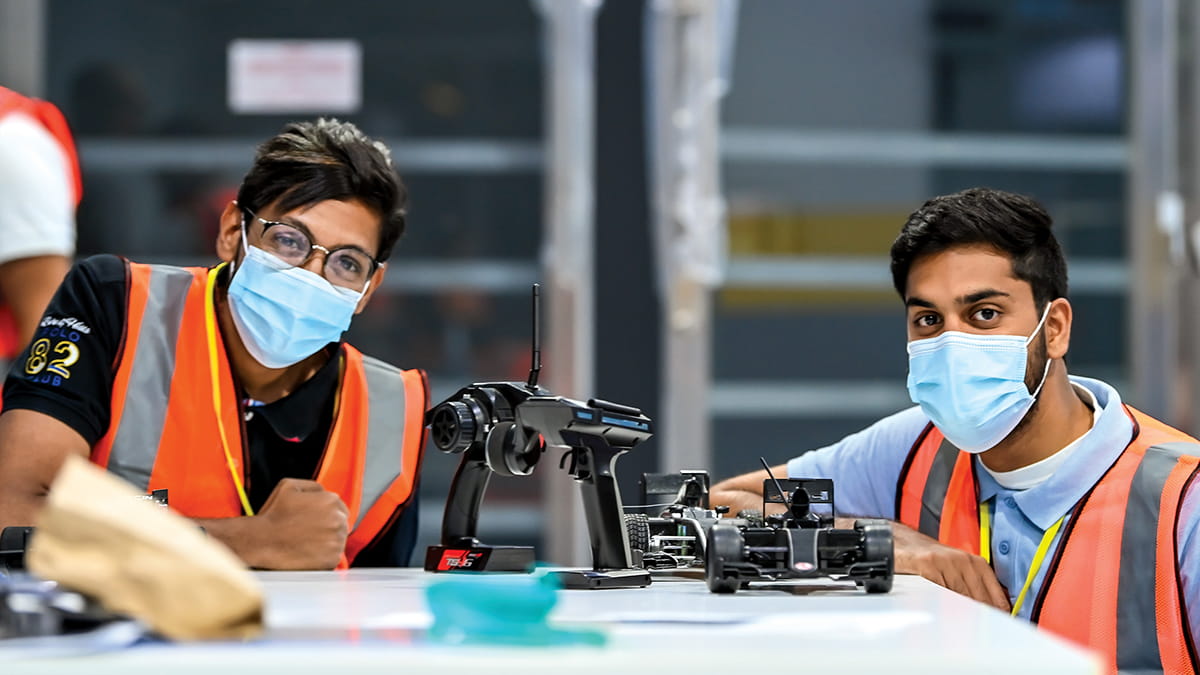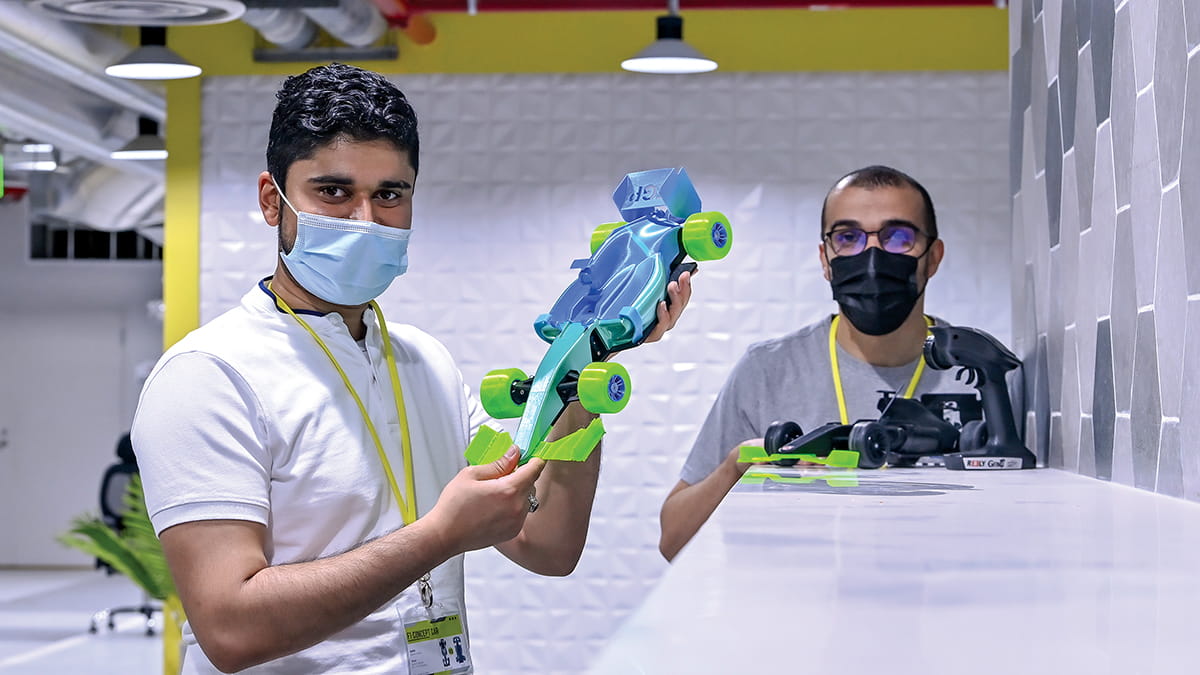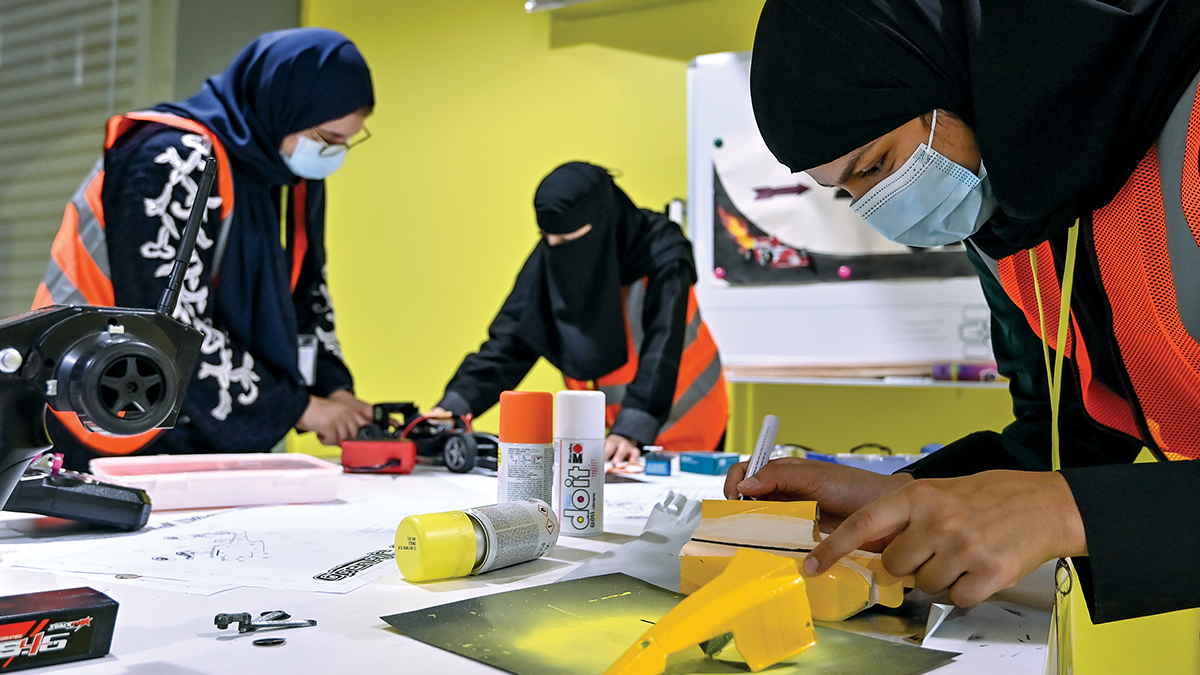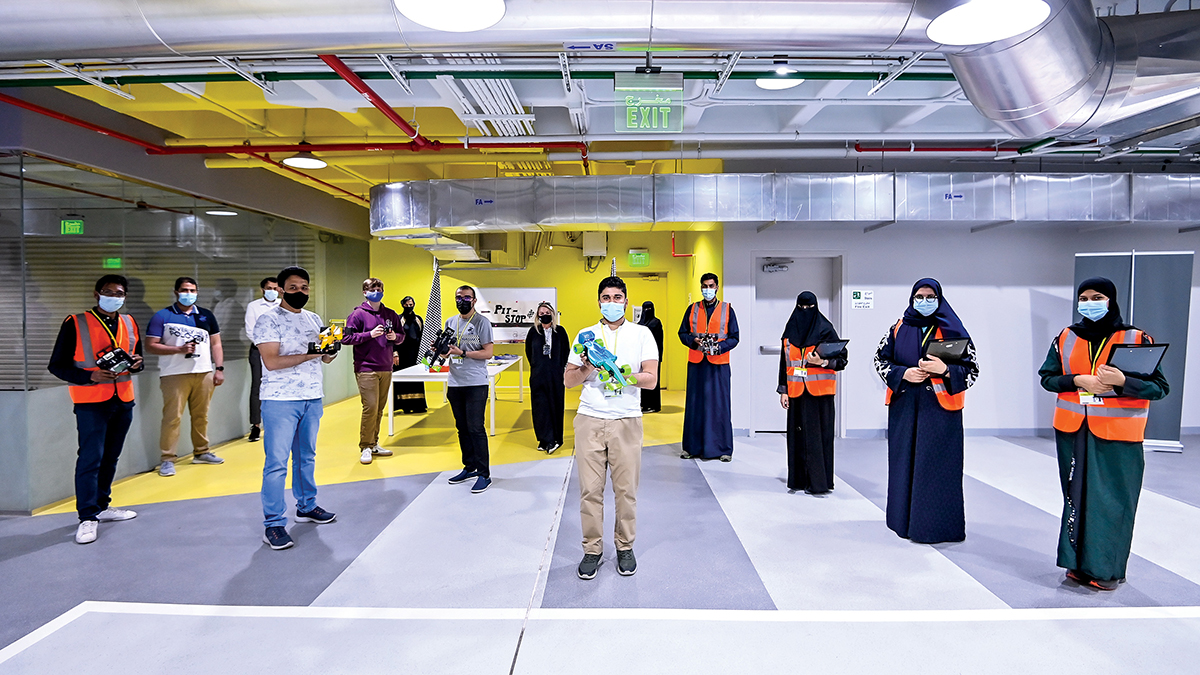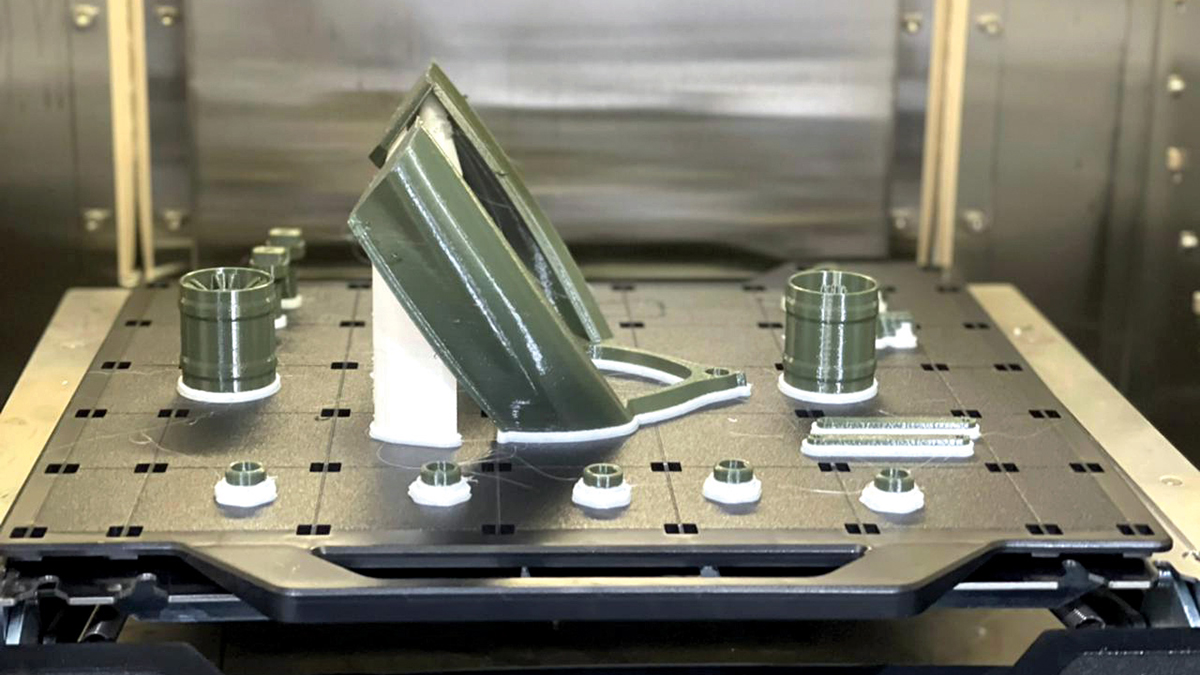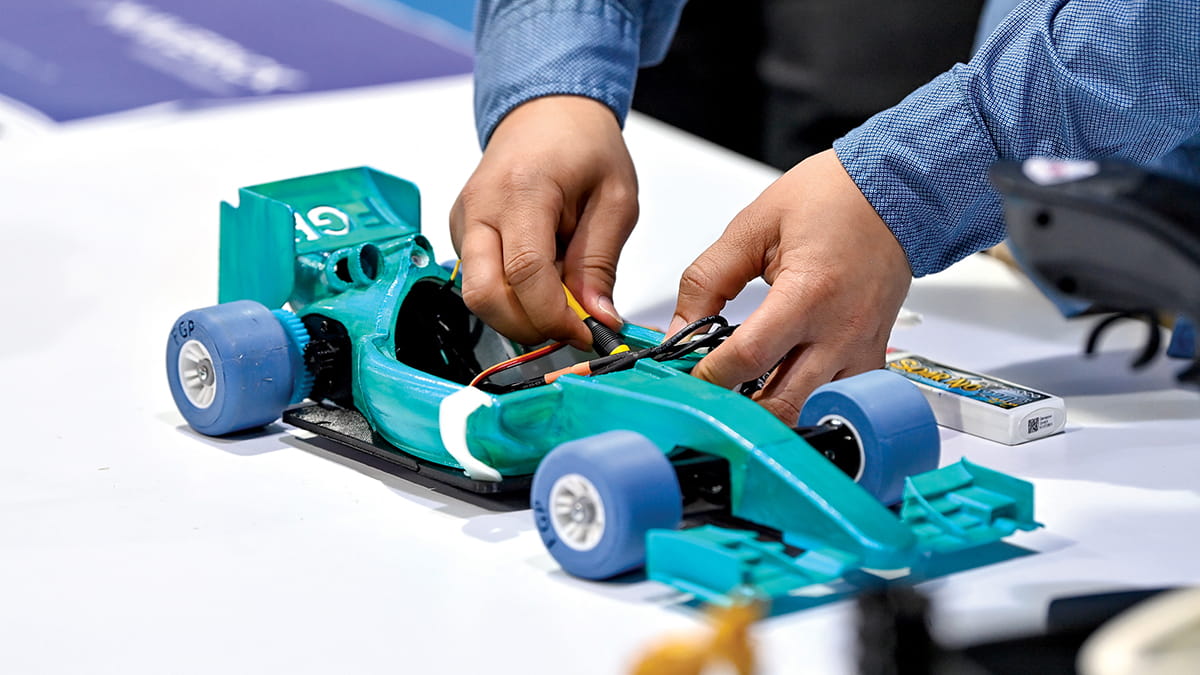F-1
IR 4.0 technology hits the track with 3-D printed racing cars
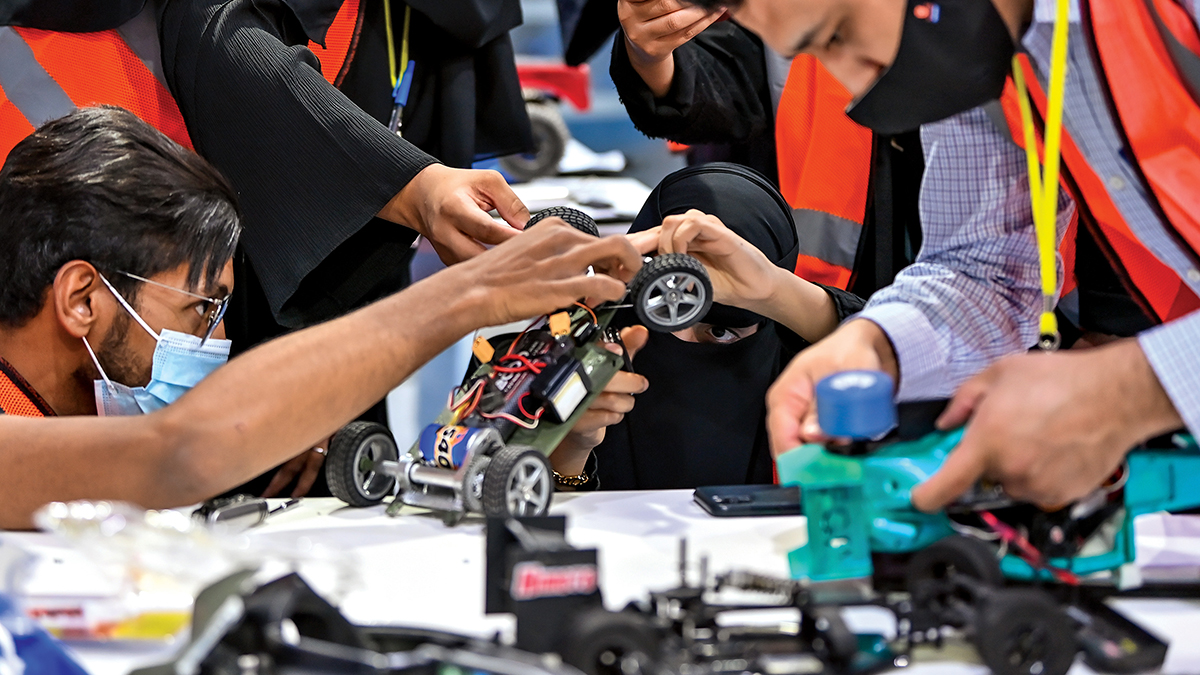
Global July 15, 2021 - By
Three teams of young, ambitious Saudi engineers and industrial designers have successfully crossed the finish line with small-scale racing cars they designed, manufactured, and constructed.
Three teams of young, ambitious Saudi engineers and industrial designers — members of the Aramco Entrepreneurship Center’s (Wa’ed) Innovation Ecosystem Society (IES) — have successfully crossed the finish line with small-scale racing cars they designed, manufactured, and constructed using additive manufacturing (3-D printing) and locally sourced electronics components. The teams — Masters, Aramco IT, and Fadhili Gas Plant Maintenance Division (FGPMD) — tested and raced their cars at the Technology Advancement & Prototyping Center (TAPC), situated in the Innovation Cluster building within the Dhahran Techno Valley, on June 14 and 26.
The TAPC, part of the King Fahd University of Petroleum and Minerals, provided technical support for the computer-aided design and the 3-D printing of race car components, including workshops for knowledge transfer, and facilities for assembling and testing the cars. The Aramco Fourth Industrial Revolution (IR 4.0) Center and Aramco’s Consulting Services Department’s Nonmetallic Engineering Division also supported the project with equipment and expertise.
The teams’ successful completion of a series of time trials at the TAPC facility represents a key milestone toward collaboratively developing a full-scale prototype racing car — a three-year project managed by Wa’ed — that will be 3-D printed, powered with hydrogen, and include artificial intelligence for autonomous driving. Wa’ed has incubated two local startups — Stellar Motors and Maverick AI — that are bringing their expertise to the project. The prototype will be showcased in December at the inaugural Formula 1 Saudi Arabian Grand Prix in Jiddah.
The Masters team, which printed their car using one of the TAPC’s 3-D printers, narrowly achieved the fastest time during the time trials, thereby demonstrating the effectiveness of their car design and construction. “This has been an amazing team effort, but at the end of the day we are all winners,” noted Hamad N. Akram, one of the Masters team’s drivers.
The two “race day” events followed months of hands-on collaborative innovation between the team members and industry experts. “Early tests proved some car components should be thinner than others, depending on their function. The lessons learned resulted in cars with improved pace,” commented Ghaffar Sether, CEO of Stellar Motors. “In the future, continuous fiber fabrication technology may be used to improve the mechanical strength of thinner components,” added Yasir Abdullah, coordinator of the TAPC.
After a small number of component failures occurred during testing, the engineers had to “upgrade” some designs and reprint the car parts. Samantha Horseman, an innovation leader at Wa’ed and president of the IES, said, “This is why we test, and it is fine to take some knocks and falls. The teams kept learning and improving their cars from the setbacks.” The Aramco IT team’s decision to change the material used for their 3-D printed components and rebuild their car was a case in point. The new car featured improved road handling and a lighter front end that was more crash resistant.
The project has expanded the participants’ notion of what is possible. “Stepping up the game of the automotive industry to 3-D printing could potentially lead to safer and greener vehicles,” said Waleed Albahnasi.
The potential of IR 4.0 technology to transform transportation has encouraged female Saudi engineers and designers to join the project. Rana N. Akram, a Masters team member, said, “I’ve enjoyed the assembly and design activities, including with 3-D printed parts, and how to start designing the car.” Sarah M. Al-Dossary, a mechanical engineer, tapped into her experience at Aramco Aviation and contributed to quality inspections, assembly, testing, and design. “Motorsport and the aerospace industry share many characteristics, including aerodynamics. I helped create a better drive shaft with improved performance, and also combined design ‘mashups’ with color theory to design the aesthetic appearance of the car,” she said.
This bodes well for the prototype racing car project and its potential for laying the foundation for a 3-D printed — nonmetallics-based — automotive industry in the Kingdom; one that produces low emission autonomous driving vehicles labeled “Made in Saudi Arabia.”
To join the IES and learn more about the quest to build a prototype racing car in Saudi Arabia click here.
